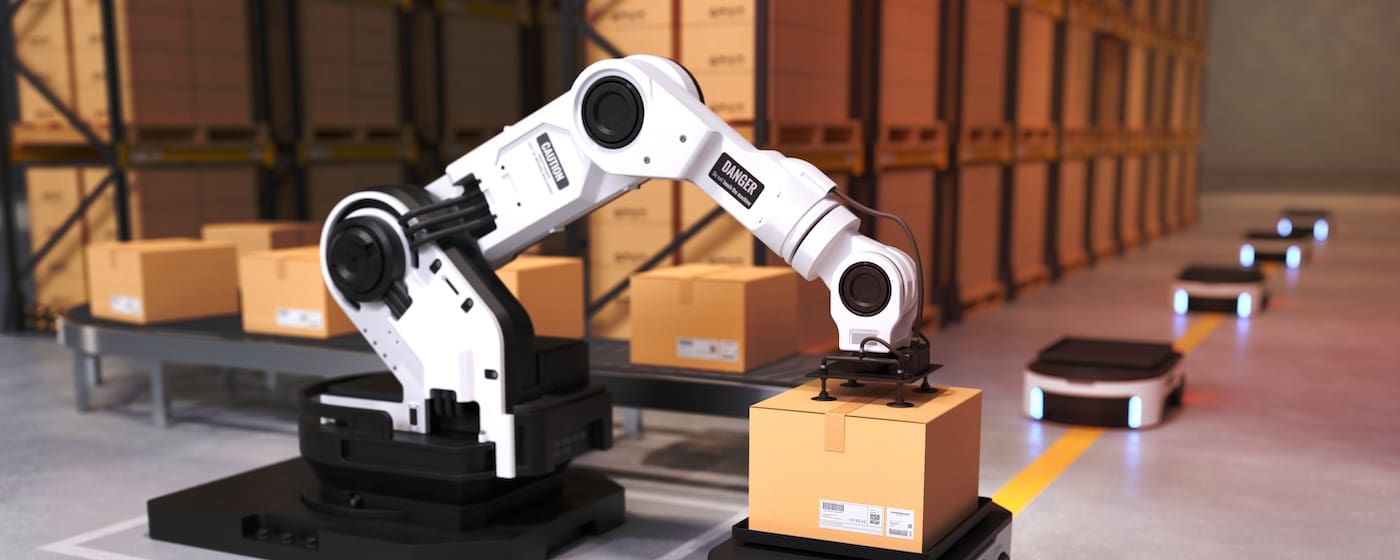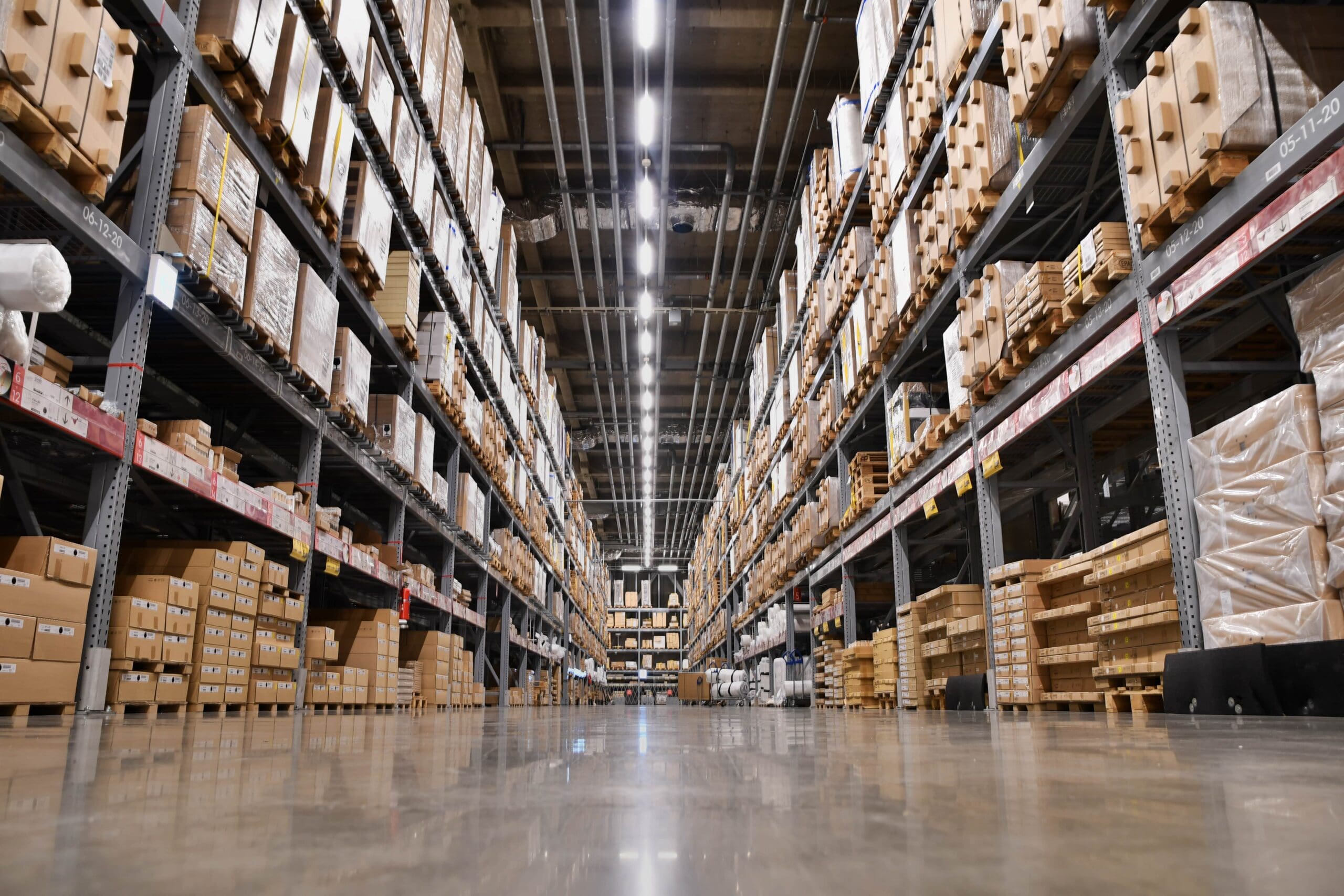Table of Contents
** Minutes
What is automated warehouse picking?
The benefits of automated warehouse picking
Types of automated warehouse picking solutions
The future of warehousing is automated (but not fully)
ShipBob automates warehouse picking with outsourced fulfillment and a WMS
Ecommerce warehouses are huge spaces. It can take a long time for pickers to find where a SKU is stored, walk there, retrieve the item, and walk back to their packing station.
This is why many brands are introducing automation into their warehouse picking processes. By leveraging advanced warehouse technologies, ecommerce businesses can save time, improve picking accuracy, and create a more efficient supply chain.
In this article, we’ll dive deep into automated warehouse picking systems, including the different types, their benefits, and how they’re changing the ecommerce fulfillment landscape.
What is automated warehouse picking?
Automated warehouse picking is the use of robotic or semi-robotic systems and other warehousing technologies to optimize the picking process.
Automated warehouse picking solutions come in many different varieties, ranging from simple optimization devices to autonomous robots. All are designed to help human workers by minimizing physical movement, improving picking speed, and reducing the chance for human error or mispicks.
What makes automated warehouse picking a game-changer in supply chain management?
As competition grows in the ecommerce landscape, businesses are striving to differentiate themselves. One of the best ways to do so is by delivering an optimal customer experience – and to do that, a business’s order fulfillment process must be efficient.
While workforce shortages and supply chain complexities have challenged ecommerce brands’ fulfillment strategies in recent years, technological advancements in automated warehouse picking are helping brands make up ground.
For example, cobots (or “collaborative robots”) are helping to increase output while reducing injuries and simplifying the picking process for human workers. These automated transport vehicles can navigate autonomously in the warehouse and report independently to an employee’s assigned picking location. Meanwhile, pick-to-light systems can guide pickers to the right location and make it easier to find the items they need to pick.
Automation solutions like these significantly speed up pick rate, so orders can get out the door faster and reach your customers at the right time. As automated picking technology continues to improve, it’s important to invest in the right solutions for your brand so that you can continue to satisfy customers, and even gain a competitive edge.
The benefits of automated warehouse picking
Introducing automation into your picking process might seem intimidating at first, but there are so many upsides to the investment. Here’s a detailed look at some of the ways automated warehouse picking can benefit your business.
Next-generation productivity
One of the biggest benefits of automated warehouse picking systems is their ability to decrease picking times.
Some automations speed up picking by assisting human pickers in locating and retrieving items and minimizing walking time. Others can even fully take over tasks without needing breaks in between.
All of this maximizes your warehouse productivity significantly, which may further improve other warehouse KPIs. For example, increased productivity means reduced labor costs.
“I’ve also been super impressed with the system’s efficiency. I think a lot of that has to do with how the picking algorithms are built, and how the software groups and clusters like-items to streamline the process. The stowing process can be super simple, and ShipBob’s WMS still lets us pick and pack at least ten times faster than before.”
Ben Tietje, Co-Founder and CEO of Earthley
Legacy systems integration
Modern automated warehouse picking solutions are designed to fit into your existing warehouse management system (WMS) with minimal disruption. That way, you can still enjoy integrated logistics without having to completely overhaul your existing systems. You might even be able to find picking automation technology that can enhance the performance of legacy systems.
Accessibility and user-friendliness
The entire point of implementing automated warehouse picking systems is to make things easier for humans. As such, these systems are designed to be highly accessible and easy to use, even for the most novice users. Your warehouse picking staff won’t have to go through rigorous training to understand how these systems work and how to collaborate with them.
Consistency
You can’t have high order accuracy without high consistency. By minimizing human effort, automated picking systems also minimize human error, which improves consistency and results in a higher percentage of accurately picked orders.
Pick-to-light systems, for example, allow pickers to easily locate the correct items. Automated handling equipment can also be used to retrieve the correct items and transport them to relevant pick stations. That way, pickers are less likely to get confused, pick the wrong items, or waste time traveling to the wrong location.
Scalability
If you want to grow your business, you need a picking process that can handle increased order volumes. With the help of automated warehouse picking solutions, you can create an efficient picking strategy that can support 100 orders or 100,000 orders, and give you the flexibility to scale up and down during peak seasons and expansions into new channels and countries.
“ShipBob’s speed to scale and fast pick, pack, and ship process has been seamless, as our business grew 1,200% in a couple of weeks. Overall, we have had a great experience having a ShipBob as a partner that can scale fast with us.”
Andrea Lisbona, Founder & CEO of Touchland
Types of automated warehouse picking solutions
Ecommerce businesses can leverage a wide variety of automated warehouse picking solutions. The right solution for your brand will depend on your needs, warehouse layout, and order picking methods. For example, some solutions may be better for zone picking while others may be ideal for batch picking.
To help you find the right fit for your warehouse, here’s a deeper dive into different types of automated warehouse picking solutions.
Goods-to-person picking
Goods-to-person picking solutions use automated handling equipment to retrieve and transport items to the operator for picking. This helps eliminate human travel time while simultaneously improving picking accuracy rates.
Equipment such as stacker cranes, automated conveyor systems, vertical lift modules, automated storage and retrieval systems (AS/RS), and electrified monorails are used in goods-to-person picking.
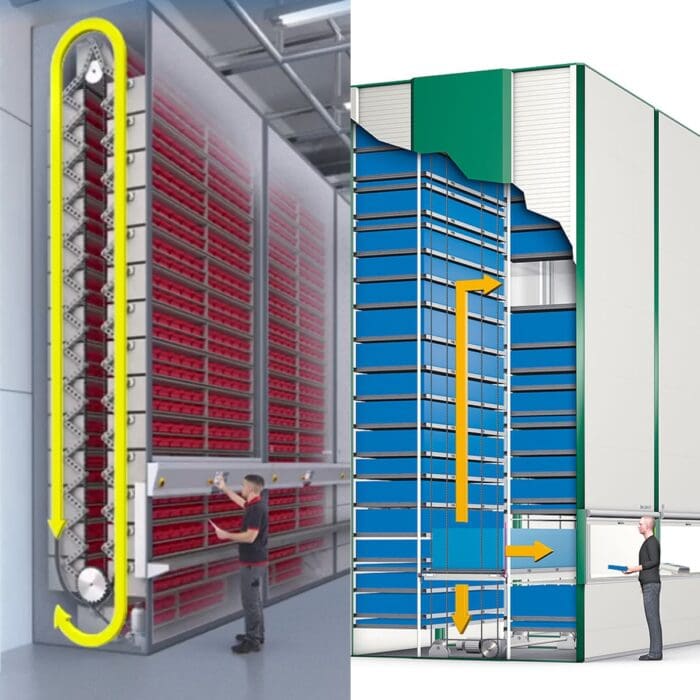
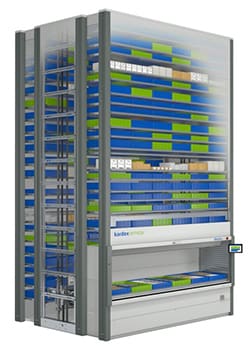
Assisted picking
Assisted picking solutions use devices to help operators with the picking process. Pickers may use voice-picking devices, RF scanners, and pick-to-light systems to guide the picking process by locating items and directing them to the right locations.
Warehouse management software can also be considered a kind of assisted picking device, as it helps divide the work among pickers. Some WMS software generates pick lists based on optimal routes to minimize travel time, and provides instructions for pickers to reduce the risk of error.
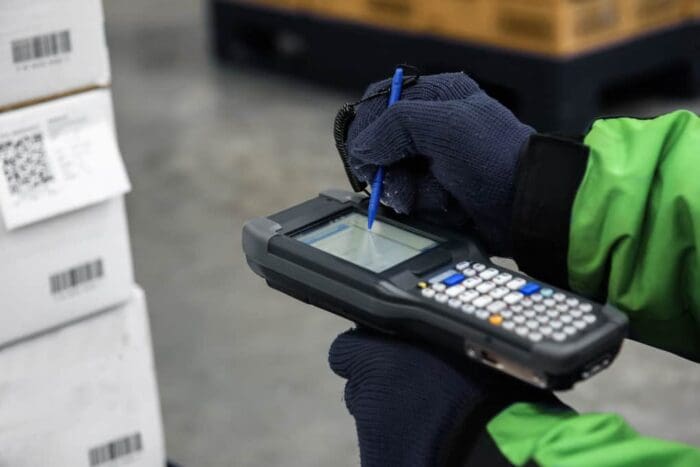
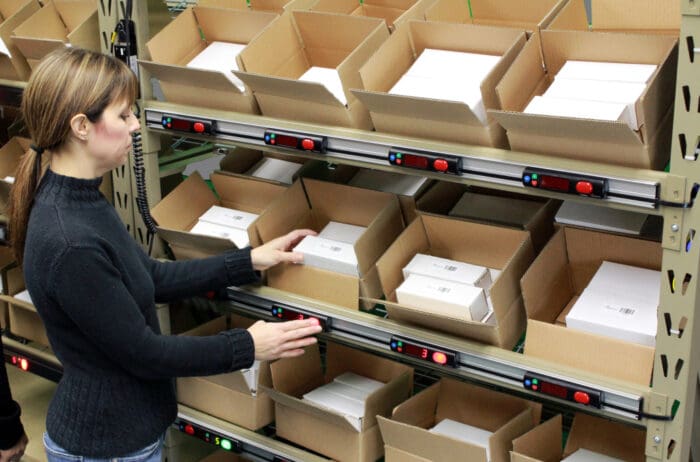
Automated picking
Some warehouses also consolidate multiple solutions and technology for a fully automated warehouse picking process. These can include automated:
- Autonomous mobile robots
- Guided vehicles
- Conveyors
- Stacker cranes
- Stacking and palletizing robots
By completely automating picking operations, these solutions remove humans from the equation. This way, workers can attend to other supply chain functions that need human attention.
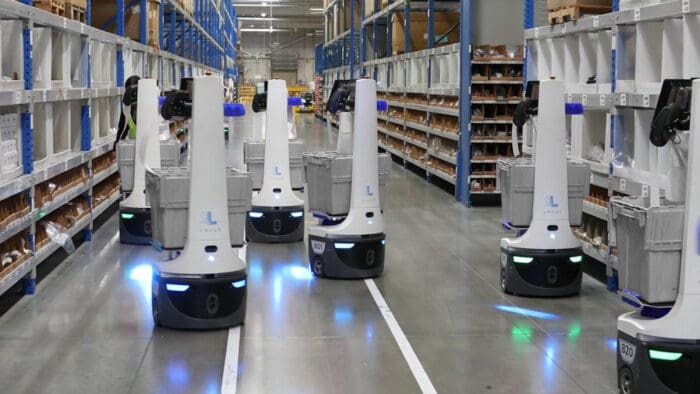
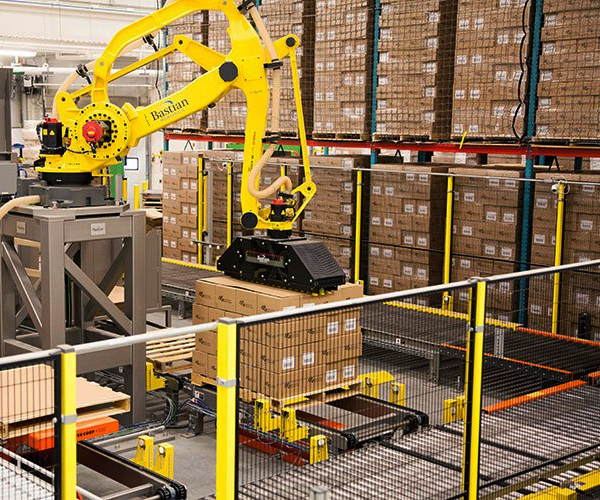
The future of warehousing is automated (but not fully)
Warehouse automation is a growing sector, with the global market predicted to reach $69 billion by 2025. More and more ecommerce brands are adopting logistics automation to optimize their picking systems, as well as other supply chain activities.
However, this isn’t necessarily a cause for concern among warehouse workers. The purpose of automation is to make humans’ jobs easier — not to eliminate them altogether. In fact, according to one recent poll, 70% of supply chain professionals surveyed viewed automation as a plus for warehouse workers, and 50% recognized automation as a way to upskill employees and even create more job opportunities.
For the foreseeable future, the warehouse automation industry is focused on building more seamless collaboration between humans and machines. Warehouse management systems, for example, work closely with collaborative robots to assist human operators in streamlining the picking process. Instead of warehouses relying solely on picking robots, human pickers leverage tools and technology to guide their tasks.
The bottom line: ecommerce merchants shouldn’t be afraid to leverage the benefits of automating warehouse fulfillment functions such as picking. With workers guiding innovation, ecommerce brands can feel good about delivering quick, accurate orders with the help of more and more complex automations.
ShipBob automates warehouse picking with outsourced fulfillment and a WMS
Picking efficiency, speed, and accuracy have never been more important for ecommerce businesses – so whether you outsource fulfillment or keep it in-house, you need a solution that will help you harness supply chain automation to optimize your picking.
ShipBob’s WMS is that solution for thousands of ecommerce brands. Built to power efficient fulfillment in dozens of warehouses worldwide, our system automatically creates pick lists based on optimal picking routes to reduce travel time, and includes flexible options for batch, auto-cluster, custom cluster, and single-order picking to improve warehouse efficiency.
Your brand can even implement ShipBob’s WMS in your own warehouses or fulfillment centers. Our experts will analyze the optimal pick method for your warehouse depending on your unique needs and help onboard your operations. Our WMS’s intuitive dashboard makes it easy to train new workers in minutes, while its pick and pack software provides visual step-by-step packing flows and built-in visuals to reduce errors.
Altogether, these automations enable brands like Spikeball to achieve 80% faster picking and packing efficiency with just 1 person running warehouse operations.
“We went from 3-4 people spending all day packing orders, and now we have our manager doing everything herself. She picks and packs orders from 7:00 am to noon, and then she’s done with DTC orders for the day. And now our team doesn’t have to rely on implicit knowledge for anything!”
Adam LaGesse, Global Warehousing Director at Spikeball
To learn more about how ShipBob’s WMS can automate your brand’s fulfillment, click below to get in touch with a fulfillment expert.
Automated warehouse picking FAQs
Below are answers to the most common questions about automated warehouse picking.
What types of businesses can benefit the most from automated warehouse picking systems?
Ecommerce businesses of all sizes can benefit from automated warehouse picking systems, especially if a brand runs its own warehouse(s).
What are the main challenges in implementing automated warehouse picking systems?
Workforce adjustment and integration with legacy systems are the main challenges to implementing automated order picking systems.
Can automated warehouse picking systems handle delicate or unusually-shaped items?
Automated picking systems may struggle with handling items that are delicate or unusually shaped. These types of goods typically require human pickers.
How do warehouse robots pick items?
Warehouse robots use advanced vision systems to navigate warehouses and identify items in their appropriate locations. Robotic arms are then used to grasp the objects and transport them to their assigned destination.
